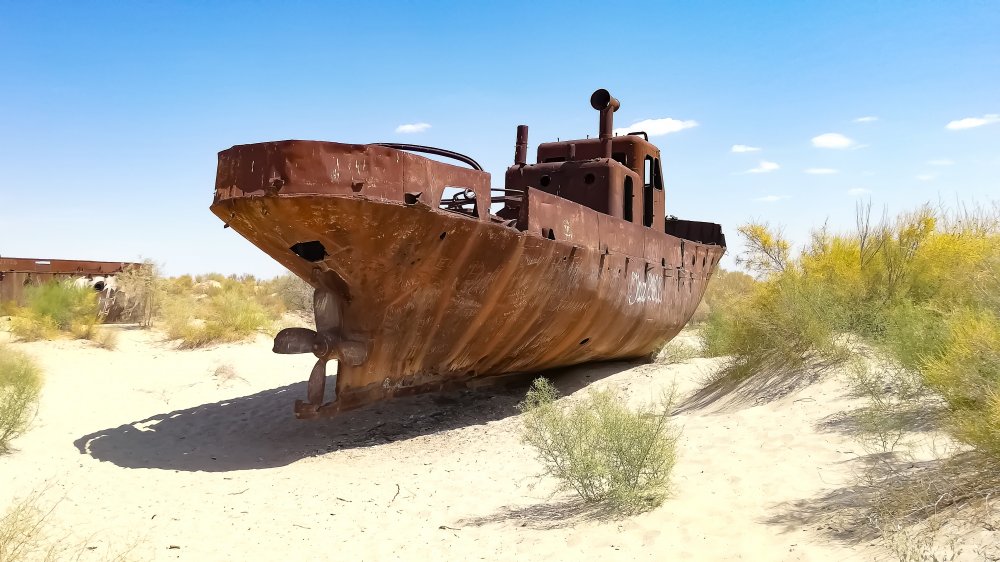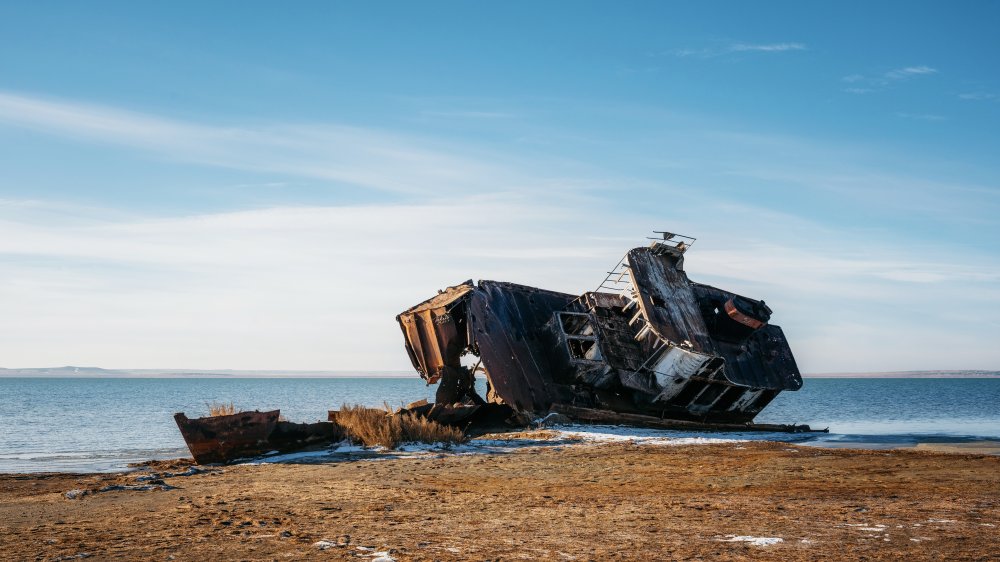How Gigantic Ships Ended Up In The Middle Of The Uzbekistan Desert
Wanderers in the Aralkum Desert, a stretch of sand between Uzbekistan and Kazakhstan, may find themselves stumbling upon a strange sight: the rusted corpses of boats strewn far away from any apparent sea.
The reason for this is that this area was once part of the Aral Sea, the fourth largest inland sea in the world. For generations, fishing communities thrived on its edges. However, as a 1989 article in The New Scientist describes, the Soviet Union had redirected the feeder rivers, the Amu Darya and Syr Darya, to irrigate cotton. While the Soviets realized this would be a problem and intended to redirect Siberian rivers southwards to replenish the sea, nothing ever came of it.
Today, Amusing Planet reports, the 68,000 square kilometre sea has been reduced to 10 percent of its original size. The fishing economy that produced one sixth of the Soviet Union's haul and employed about 40,000 people was devastated.
On a website dedicated to The Aral Sea Crisis, Columbia University turns its attention to the changes created by the drop in sea level that compounded the disaster. As the sea level decreased, the salinity of the water changed, which killed the fish inhabiting it. The reduced sea area also did not simply leave land behind but brought about a desertification that killed vegetation by 40 percent, which in turn increased the dust storms that now ravage the area. In the midst of this almost post-apocalyptic vision, the old abandoned fishing boats serve as a memorial to a pre-climate change history.
The future of the Uzbekistan desert?
Despite the gloom-laden imagery of rusted ships in a desert, there may be some cause for hope. In 2017, Wired reported on how a decade after The World Bank set about saving the remainder of the Aral Sea by building a dam to restore the delta, wetland ecosystems that once existed in the area of the northern portion of the Aral Sea had started coming back to life.
The next year, National Geographic wrote about the resurgence of fish in the remainder of the Aral Sea: "[After] the Kokaral Dam was finished, the average salinity dropped from 30 grams to 8 grams per liter, prompting the return of almost two dozen freshwater species through the Syr Darya river." Just as importantly, the article turned its attention to the fishing communities who were seeing a new breath of life due to the return of the fish. Kidirbai, a Kazakh local who matured during the sea's low points, told National Geographic, "The sea is the source of life for us... My son will get married and he will continue fishing."
Across the border in Uzbekistan, however, the story is more somber, as the BBC notes. The economy there depends on cotton more heavily than in Kazakhstan, meaning that they are less willing to redirect water to restoration efforts. As with the ships that lay rusting in the desert, the sea presents a reminder of how societies actively choose the environment they live in.

